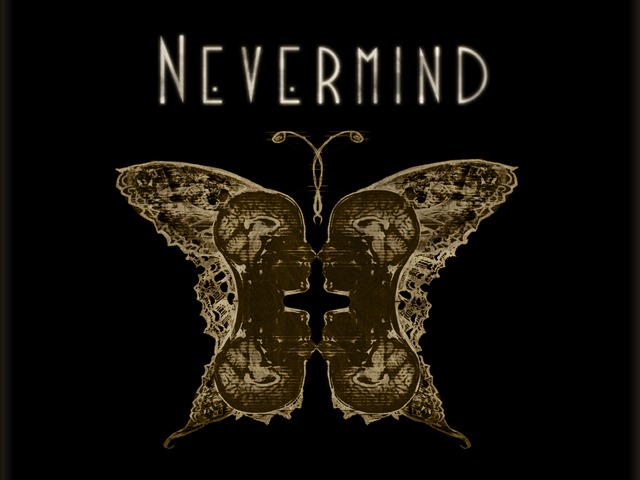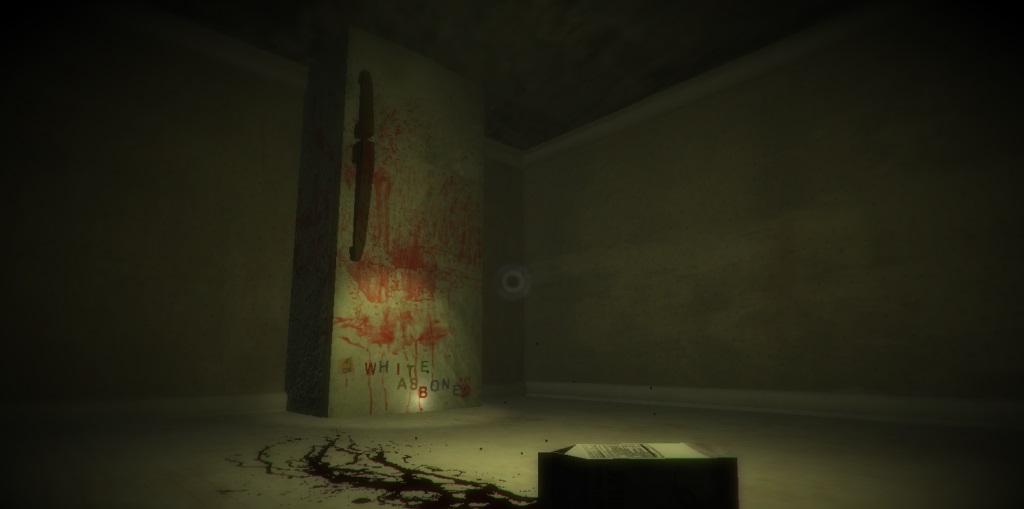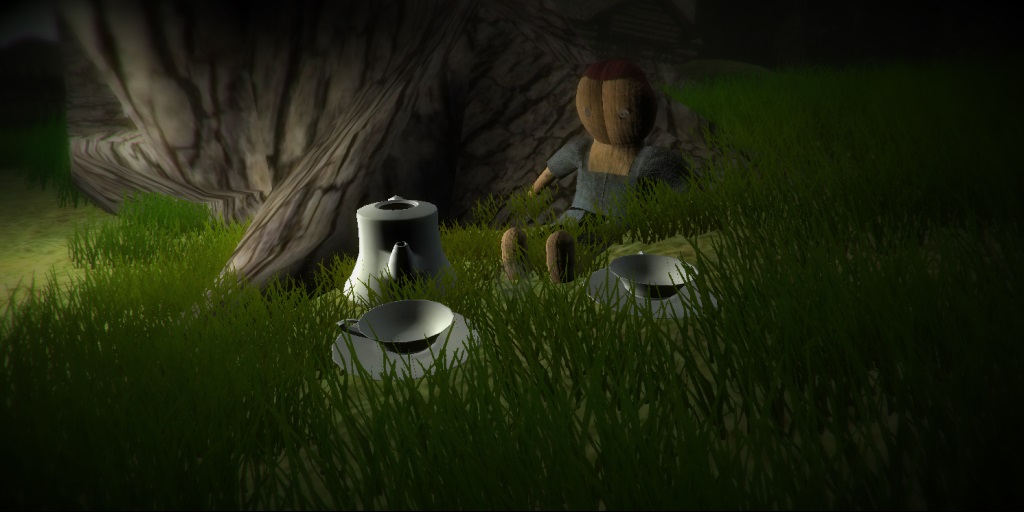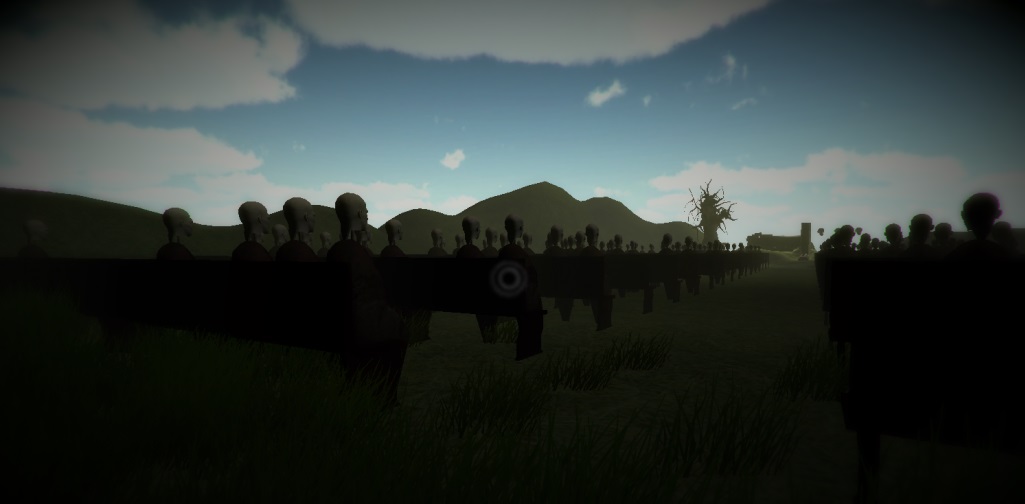Erin Reynolds Discusses The Future of Nevermind
By Julie Morley
[divider] Since the Kickstarter campaign, the Nevermind team has quieted down for the past couple of months. We’ve been dying to know what’s been going on with Flying Mollusk since then and the future of Nevermind.
Since the Kickstarter campaign, the Nevermind team has quieted down for the past couple of months. We’ve been dying to know what’s been going on with Flying Mollusk since then and the future of Nevermind.
Nevermind began as a project for Erin Reynold’s Interactive Media Program at USC. The following year, the staff of students and Erin had a functioning prototype. They knew they were onto something unique and bit with this project. When they worked Nevermind in the festival circuit, it received tons of attention and award nominations. With all the support gained for Nevermind, they decided it was time to turn Nevermind into a well rounded game for everyone to enjoy.
With the incorporation of Biofeedback technology, Nevermind would be a pioneer in game therapy and coping with both stress and anxiety.
From February to March, Erin ran a Kickstarter campaign to raise $250K to make Nevermind just as the team dreamt. Unfortunately, the funding goal was potentially over-ambitious, and though the support for Nevermind was massive and strong, it was only enough to reach the halfway mark. Since then, things have been quiet and we’ve been desperate to find out what’s going on with Nevermind and the future of biofeedback games.
I was able to interview Erin Reynolds, creator of Nevermind, to learn of the future of this innovative game and what waits ahead for Biofeedback games. This is what she had to say:
[divider]Cliqist : First, could you explain a little bit about Nevermind for our readers who are unfamiliar with it?
Erin Reynolds : Absolutely! Nevermind is a biofeedback enhanced horror adventure game that endeavors to help players habituate stress management techniques that they can use in the “real world.”
In Nevermind, you delve into the darkly surreal landscape of a psychological trauma victim’s subconscious psyche. In so doing, you will be subjected to an array of terrifying scenarios and landscapes as you try to solve the mystery behind each patient’s traumatic event.
The real trick is that you must bravely confront the horrors of Nevermind while also trying to maintain your composure under pressure. The more scared or stressed you are, the more challenging the game will become. That said, if you can find a way to relax, the game will return to its easier state – although, in Nevermind (and in real life) that’s easier said than done.
Cliqist : Congratulations on the partnership with Intel for Nevermind! This spells out some amazing things for Nevermind in the future that we’re all pretty excited about. With this partnership, how much expansion (story-wise and level-wise) can we expect for Nevermind as a result?
Erin Reynolds : Thank you so much! The team and I could not be more excited about everything this partnership will enable us to do. Beyond integration of biofeedback tracking and new gesture-based events using the Intel ® RealSense™ 3D camera technology, we will also be doing an overhaul of the current level, keeping the existing story but updating the art and gameplay to make it that much more immersive and terrifying. We’re also planning on building two brand new levels as well!
Our long term vision for Nevermind ultimately spans a wide variety of patients and levels that lend even more visibility into the lasting impacts of psychological trauma. As such, while this partnership enables us to bring new life to Nevermind, we certainly see this as just the beginning!
Cliqist : Despite the funding gained through Intel, is a Kickstarter campaign relaunch a possibility?
Erin Reynolds : Very much so!
Although the partnership with Intel is an incredible opportunity that has given the project a major shot in the arm and guarantees that we’ll be able to release a version of Nevermind in 2015, it doesn’t provide us with all the resources we need to make the full experience that we envisioned from the get go. That said, we’re still extremely passionate about creating the full number of levels we envisioned, making the game accessible to as broad an audience as possible, and bringing it to as many platforms as we can. Finally, we remain as dedicated as ever to thoroughly exploring and developing out the therapeutic potential of Nevermind or Nevermind-like content, and we are working with experts in the behavioral health field with the intent of creating a version of the Nevermind experience that is tailored toward being a tool for specific therapeutic needs.
Based on the tremendous support and feedback we had from the first Kickstarter campaign, we feel confident that others feel the same way about achieving the full potential of Nevermind. As such, we’re hoping to reach out to the community before the end of the year to see if, together, we can bring Nevermind all the way to become the robust, full-featured experience we believe it should be.
Cliqist : Additionally, are you considering releasing Nevermind to other console – like Xbox ONE since it was a stretch goal?
Erin Reynolds : While we’re currently fully focused on making the Intel RealSense camera version of the game as amazing as possible – we remain really excited about the possibilities of bringing Nevermind to other platforms like Xbox One and Oculus Rift. Ultimately, much will depend on whether we’re able to secure the resources necessary to ensure that we can do so properly. However, we’ve seen a lot of enthusiasm from both the community and industry – so we’re optimistic that eventually releasing Nevermind to console(s) and other platforms will eventually come to fruition.
Cliqist : Since the campaign, what has the team been up to with Nevermind – how has the game progressed since the campaign?
Erin Reynolds : We went a little quiet after the campaign – but we’ve actually been quite busy! After the Kickstarter campaign, we attended a number of conferences and festivals, such as Games for Change (where we won the Pitch Event!), the Game Developers Conference, and the Neurogaming Conference. All the while, meeting with different people across the industry in an effort to explore different avenues for making Nevermind a reality.
Needless to say, it was a very exciting and hectic time, but it helped lead to both the Intel partnership and a number of other exciting opportunities for us that we have yet to announce.
As of June, the team and I have been knee-deep in development once again and the updates to the game are already looking great (if I do say so myself). We’re not at liberty to reveal too much just yet – but I cannot wait to share some of the progress that has been made in the (hopefully) not too distant future.
Cliqist : Since the introduction of Nevermind to Kickstarter and with the popularity it’s gained, has there been an increase in Biofeedback games or some with similar elements in its design? I would imagine developers have reached out to you about their own projects or there have been some influenced by Nevermind.
Erin Reynolds : I hope that the attention Nevermind received on Kickstarter helped encourage curious developers to seriously look at biofeedback as a viable input mechanism to enhance the player’s experience in their games. While I have heard from a few game developers, I’ve actually had quite a few researchers from around the world reach out and express interest in working with games like Nevermind to further investigate the positive impact that games can potentially have on players. Obviously, this kind of research is deeply interesting to me both personally and professionally (especially as it pertains to Nevermind), but what I find most exciting are the implications of this international academic interest: games as a medium and a tool are being taken seriously by a whole host of smart, curious, and accomplished individuals.
Cliqist : If this is not covered in the previous question – What are your predictions regarding Nevermind’s effect on psychological and indie games all around? If there is not already a rise in popularity in games like it, do you think it will be a gateway for other Biofeedback games to pop up?
Erin Reynolds : I certainly hope it will serve as an example of some of the ways biofeedback can be used to enhance a gameplay experience. To me, it feels like many of the current applications of biofeedback in interactive technology fall under the “health app” category – which, don’t get me wrong, is fantastic! There is so much potential for the many ways that biofeedback input and consumer technology can work together to create amazing, powerful tools. However, it doesn’t have to stop there – many “traditional” video games can equally benefit from biofeedback as a powerful input. Accessible, consumer-focused technology such as the Intel RealSense 3D Camera will make biofeedback input something that will eventually become standard, ubiquitous technology. In the interim, it’s up to us as game developers to create amazing content to leverage it in the most interesting, exciting ways possible. My hope is that Nevermind will help inspire other developers to noodle around with it – to spark their imagination and show them that biofeedback can be an extremely powerful within the entertainment medium as a whole.
Cliqist : Is there already a projected release date for Nevermind?
Erin Reynolds : We’re looking at a full release in late 2015 – but we are considering releasing some of the content sooner through Steam Early Access.
Cliqist : Will you be pursuing crowdfunding for any game projects in the future?
Erin Reynolds : I had a tremendously positive experience with crowdfunding Nevermind and am very open to crowdfunding projects in the future. Being able to involve the community and future players (the people for whom we’re making the game in the first place) in a very personal and direct way is an incredible opportunity!
Cliqist : Lastly, if you could explain Nevermind in five words, what would they be?
Erin Reynolds :
Haunting, Empowering, Dark, Intense, Enriching
[divider]If you’d like to learn more about Nevermind be sure to keep an eye on the official website at NevermindGame.com
[divider][facebook][tweet][Google][pinterest][follow id=”Cliqist” size=”large” count=”true” ] [author image=”http://cliqist.com/wp-content/uploads/2014/01/julie.jpg”]Julie Morley is a freelance writer and comic artist from Spring, Texas. She attended the Academy of Art University for two years, studying Animation and Illustration. Whilst here, she learned about writing comic scripts, storyboards, and general storytelling. Since leaving college, she has been working on personal comic projects, stories, and illustrations. She aspires to release a self published comic within two years. For the majority of her life, she has been playing console games, typically being third-person shooters and sandboxes. Her favorite game of existence is Dark Cloud II (Dark Chronicle) and her favorite Indie game is Gone Home.[/author]









